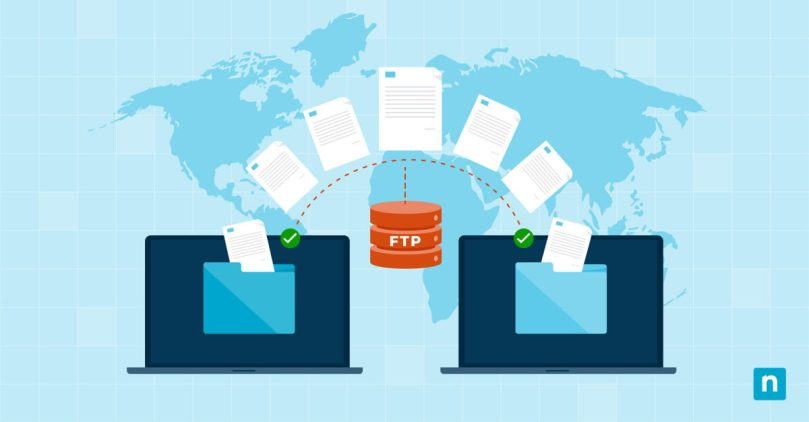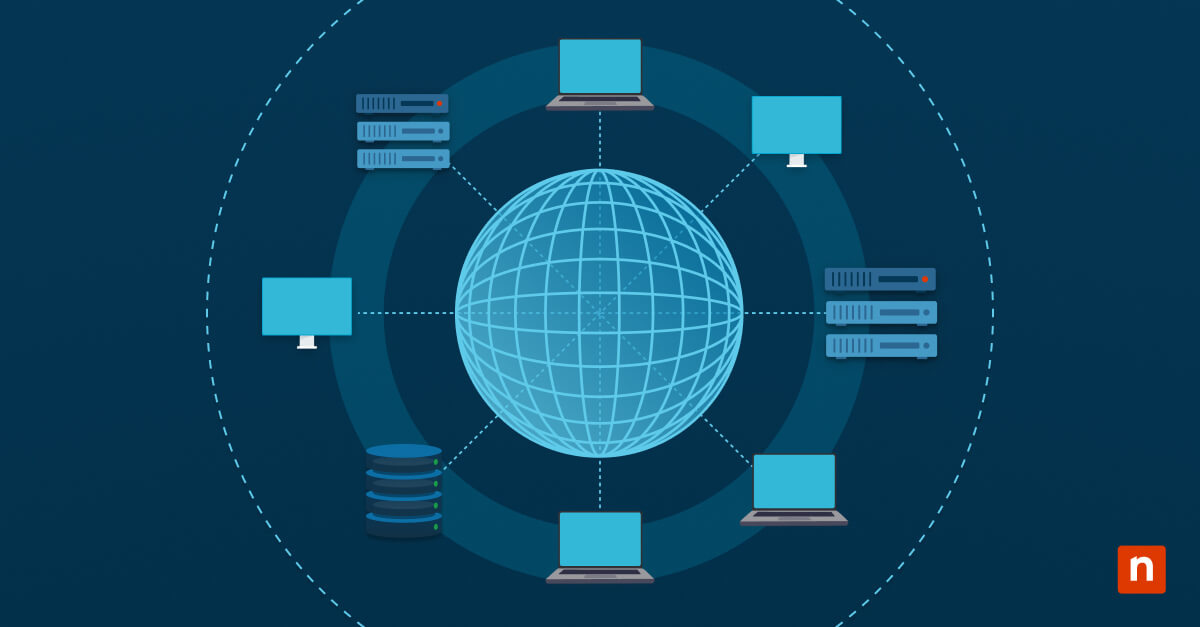In the digital dawn of the 1970s, the File Transfer Protocol (FTP) emerged as a pioneering solution for transferring files in the burgeoning world of networked computers. Before FTP, file transfers were tangible and reliant on physical media like floppy disks. The need for a standardized electronic method became apparent as computer networks took root, and FTP answered this call.
FTP was revolutionary, enabling sharing of files over a network with relative ease. However, as the Internet grew, so did concerns over the protocol’s lack of security – it was, after all, a child of a more innocent digital age. This led to the development of secure variants and alternatives, some of which will be discussed in this article.
Today, while FTP is less prominent in the face of newer, arguably more secure, and versatile technologies, it remains a critical piece of the Internet’s history and continues to be used where large, traditional file transfers are the norm. In IT, they are indispensable for software updates and patch distribution. The media industry relies on them to efficiently transfer large multimedia files, healthcare systems use them to exchange patient data and medical images, and international scientific research might grind to a halt without FTP for large-dataset transfers.
Types of FTP
FTP servers primarily operate in two modes:
- Anonymous: enables password-free file access, often for public sharing
- Password-protected: requires authentication for accessing sensitive data. (Password-protected FTP does not encrypt data, prompting the development of more secure variants.
It’s essential to choose the proper protocol based on the specific security needs and the nature of the data being transferred. This table concisely compares the different FTP-related protocols, highlighting their security features and typical use scenarios.
| Protocol | Description | Security features | Common use cases |
| FTP (File Transfer Protocol) | The original protocol for transferring files over a network. | No inherent encryption transfers data in plaintext. | General file transfers, often in closed or trusted networks. |
| FTPS (FTP Secure) | An extension of FTP, adding support for SSL/TLS encryption. | Adds encryption for both commands and data transfers. | Secure file transfers where data encryption is necessary, such as in finance or healthcare sectors. |
| SFTP (SSH File Transfer Protocol) | A separate protocol from FTP, using SSH to transfer files. | Encrypted connections using SSH, securing both commands and data. | High-security environments where data integrity and confidentiality are critical, like government or military operations. |
| SCP (Secure Copy Protocol) | Primarily used for securely transferring files between hosts in a network. | Utilizes SSH for data transfer, ensuring secure and encrypted connections. | Suitable for quick, secure file transfers, particularly in scripting and automation processes. |
| TFTP (Trivial File Transfer Protocol) | A simpler version of FTP, without the complexity of FTP. | Lacks authentication and encryption, very minimal security. | Lightweight file transfers in local networks, often used in booting or configuring network devices. |
FTP active vs passive
Active mode in FTP involves the server initiating a connection to the client for data transfer, which can raise security concerns due to firewall issues. Conversely, passive mode, where the client connects to the server, is more firewall-friendly and is preferred in most client-server interactions.
Active mode might be used in controlled, secure server-to-server transfers. In contrast, passive mode is the go-to for client-to-server transfers due to its reduced security risks and broader compatibility with various network configurations.
| Active FTP connection flow | Passive FTP connection flow |
| Client opens a control connection to the server’s command port (21). | Client opens a control connection to the server’s command port (21). |
| Client sends the PORT command with a client-side port number. | Client sends the PASV command to the server. |
| Server opens a data connection from its data port (20) to the client’s specified port. | Server responds with its IP address and a server-side port number for data transfer. |
| Server sends an acknowledgment over the control connection. | Client opens a data connection from a random unprivileged port to the server’s specified port. |
| Data transfer begins over the data connection. | Server sends an acknowledgment over the control connection. |
| Upon completion, the data connection is closed. | Data transfer begins over the data connection. |
| Control connection remains open for further commands until closed by the client or server. | Upon completion, the data connection is closed. |
| Control connection remains open for further commands until closed by the client or server. |
What is an FTP client?
FTP clients are software applications that enable users to interact with an FTP server, handling tasks like uploading, downloading, and managing files on the server. It simplifies the process of connecting to an FTP server, providing a user-friendly interface for file transfers. Interaction between the client and server involves sending FTP commands for file actions, which the server processes.
Notable FTP clients include FileZilla, known for its user-friendly interface, WinSCP, praised for its robust security features, and Cyberduck, which stands out for its integration with cloud storage services.
Benefits of FTP servers
Efficiency
FTP servers are highly valued for their speed and efficiency, particularly in handling large files or bulk transfers.
Security
They incorporate robust security features, especially in FTPS and SFTP variants, ensuring data protection.
Versatility
Their open-source nature, scalability, and customizability allow organizations to tailor file transfer infrastructures to specific needs.
Data control
Their centralized file management simplifies data handling and access control, which is particularly crucial for organizations managing vast data repositories.
FTP vs cloud storage
Choosing between FTP servers and cloud storage hinges on specific needs. FTP servers are preferred for high-speed, large-volume transfers with a need for granular control and security. Cloud storage, while offering ease of access and collaboration features, is better suited for scenarios where off-site data storage and integration with other cloud services are priorities. In the realm of privacy control, FTP servers provide a more contained and customizable environment for data management, contrasting with cloud storage which, while convenient, often involves third-party handling and thus potentially less direct control over data privacy.
Looking forward
As we navigate the ever-evolving digital terrain, FTP servers stand as resilient pillars, offering unmatched efficiency, security, and scalability in file transfer. They not only adapt to varying security demands with a spectrum of protocols but also anchor their relevance firmly in the diverse file transfer needs of today’s IT infrastructures. For those charting their course in the vast sea of data transfer and storage, considering factors like volume, security, and control is crucial. Ultimately, aligning with a solution that seamlessly integrates with one’s operational goals and security strategies is key to navigating the future of data management.








